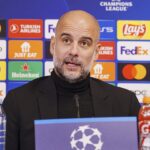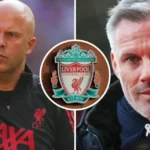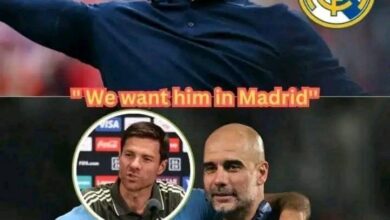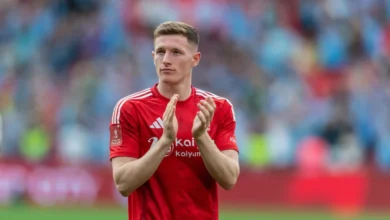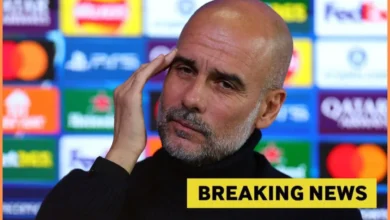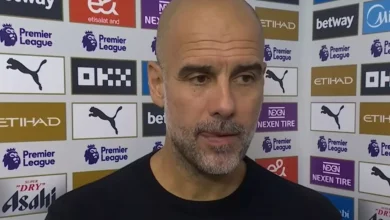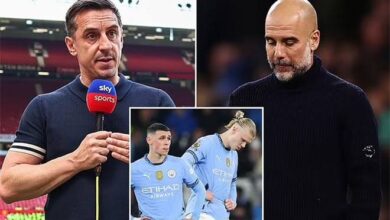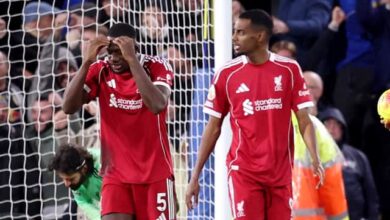All completed Manchester City transfers so far in 2025-26 – listed
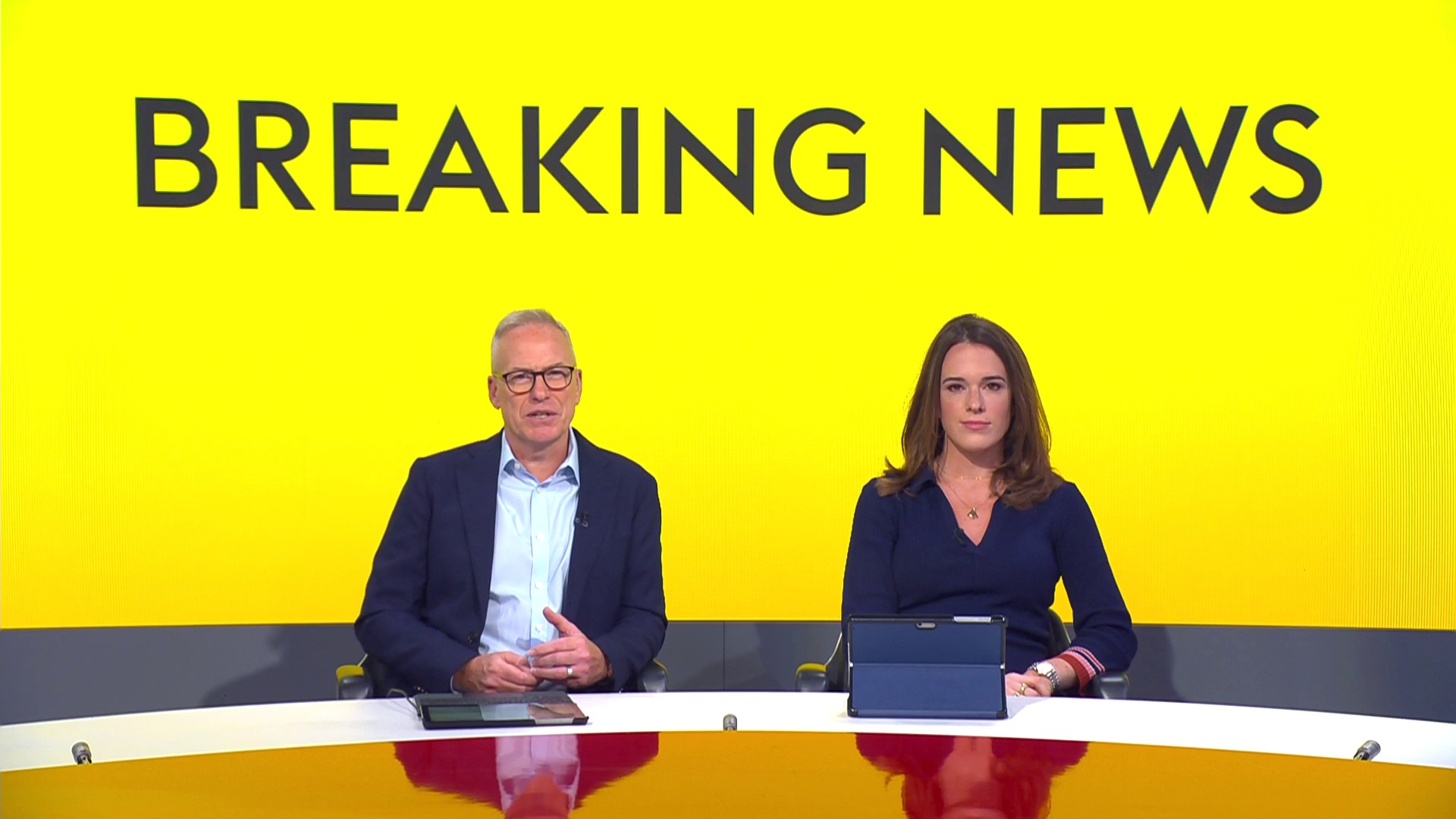
Manchester City enters the 2025-26 transfer window with a sense of urgency that has become unfamiliar at the Etihad Stadium. After what many considered a disappointing campaign by their extraordinary standards, the club finds itself in a position where significant squad reinforcement has become not just desirable, but essential. The Citizens concluded the previous season in third place in the Premier League—a position that, while respectable for most clubs, represents a considerable drop from the heights they have grown accustomed to under Pep Guardiola’s stewardship.
The campaign’s conclusion brought with it uncomfortable conversations about the club’s immediate future. For the first time in years, there were genuine concerns about potentially missing out on Champions League qualification, a scenario that would have been unthinkable during the peak of City’s dominance. More troubling still were the persistent rumors and speculation surrounding Guardiola’s future, with media outlets and pundits questioning whether the Catalan mastermind might consider his time in Manchester complete.
However, as the season drew to a close, City demonstrated the resilience and character that has defined their success over the past decade. The team finished strongly, showing glimpses of the football that has made them one of the most feared sides in world football. This late-season revival provided hope and vindicated the club’s faith in their established philosophy, but it also highlighted the need for strategic reinforcement to ensure such struggles don’t recur.
The summer of 2025 presents Manchester City with both challenge and opportunity. With the transfer window now officially open, the club’s hierarchy, led by Chairman Khaldoon Al Mubarak, has made clear their intention to return to the summit of English and European football. Al Mubarak’s message has been unequivocal: “We will be back. Today is a new day.” These words encapsulate not just determination, but a recognition that significant work lies ahead.
Strategic Planning and Market Approach
Manchester City’s approach to the 2025-26 transfer window reflects a carefully considered strategy that addresses both immediate needs and long-term planning. The club’s recruitment team, working in close collaboration with Guardiola, has identified several key areas requiring attention. The priority lies not just in adding quality to the squad, but in ensuring that new signings align perfectly with the tactical philosophy that has brought the club such success.
The Citizens’ transfer strategy for this window appears to be built around several core principles. First, there’s an emphasis on acquiring players who can make an immediate impact while also possessing the potential for long-term development. Second, the club is prioritizing versatility, seeking players who can operate effectively in multiple positions—a hallmark of Guardiola’s preferred squad composition. Finally, there’s clear focus on maintaining the technical excellence and tactical intelligence that defines Manchester City’s playing style.
The financial landscape surrounding the club remains robust, despite the previous season’s relative disappointments. City’s strong commercial performance and prudent financial management in recent years have positioned them well to compete in what promises to be an expensive transfer market. The club’s ability to offer substantial fees, competitive wages, and the prospect of working under one of football’s greatest coaches continues to make them an attractive destination for elite talent.
However, the transfer market of 2025 presents unique challenges. Competition from other major European clubs has intensified, with several teams experiencing their own periods of transition and investment. Additionally, Financial Fair Play regulations continue to shape transfer strategies across the continent, requiring careful balance between ambition and compliance.
Major Transfer Targets and Negotiations
Tijjani Reijnders: The Marquee Signing
At the forefront of Manchester City’s summer recruitment drive stands AC Milan’s Dutch midfielder Tijjani Reijnders, with reports suggesting the clubs have agreed on a substantial £59 million transfer fee. This potential acquisition represents exactly the type of signing that exemplifies City’s current transfer strategy—a player who combines immediate quality with long-term potential.
Reijnders has emerged as one of Serie A’s most impressive midfield talents, demonstrating the technical ability, tactical awareness, and physical attributes that make him an ideal fit for Guardiola’s system. His performances for Milan have caught the attention of Europe’s elite clubs, but City appears to have moved decisively to secure his services. The reported fee reflects both the player’s current value and his potential for further development under Guardiola’s guidance.
The Dutch midfielder’s skill set aligns perfectly with City’s tactical requirements. His ability to operate in multiple midfield roles provides Guardiola with the tactical flexibility that has become synonymous with the team’s approach. Whether deployed as a deep-lying playmaker, box-to-box midfielder, or in a more advanced creative role, Reijnders possesses the technical ability and football intelligence to excel.
What makes this potential signing particularly significant is its timing. With several established midfield players entering the latter stages of their careers, Reijnders represents both immediate reinforcement and long-term succession planning. His age profile suggests he could become a cornerstone of City’s midfield for years to come, providing the foundation for continued success.
The negotiation process appears to have progressed smoothly, with both clubs reportedly satisfied with the financial structure of the deal. However, as with all major transfers, the official announcement awaits the completion of various administrative processes, including medical examinations and the finalization of personal terms.
Alternative Targets and Contingency Planning
Manchester City’s recruitment strategy extends beyond individual targets, with the club maintaining multiple options for each position they seek to strengthen. This approach reflects both prudent planning and the competitive nature of the modern transfer market, where deals can collapse unexpectedly due to various factors.
In the attacking midfield and wing positions, Xavi Simons has emerged as a potential alternative target should other negotiations prove unsuccessful. The young Dutch talent has impressed observers with his performances and represents the type of versatile, technically gifted player that thrives in Guardiola’s system. His ability to operate across multiple positions in the final third would provide City with additional tactical options.
Rayan Cherki of Lyon represents another alternative in the creative midfielder category. The French talent has long been regarded as one of European football’s most promising young players, possessing the flair and technical ability that could translate effectively to the Premier League. However, negotiations with Lyon are reportedly complex, reflecting both the player’s value and the French club’s reluctance to lose such a talented prospect.
These alternative targets demonstrate City’s methodical approach to recruitment. Rather than fixating on individual players, the club maintains a broader view of the market, ensuring they have viable options regardless of how specific negotiations develop. This strategy has served them well in previous transfer windows and appears to be guiding their approach once again.
Defensive Reinforcements
Addressing Full-Back Concerns
Manchester City’s defensive requirements for the 2025-26 season focus particularly on the full-back positions, where age and tactical evolution have created both opportunities and necessities for change. The club’s pursuit of Wolves’ left-back Rayan Ait-Nouri represents a strategic move to address long-term needs while adding immediate quality to the squad.
Ait-Nouri has established himself as one of the Premier League’s most promising young full-backs, combining pace, technical ability, and tactical awareness in a package that appears ideally suited to City’s demands. His performances for Wolves have demonstrated his ability to contribute effectively in both defensive and attacking phases, a crucial requirement for any player operating in Guardiola’s system.
The Algerian international’s potential arrival would address both immediate and future concerns. While City’s current options at left-back remain viable, the addition of a player of Ait-Nouri’s quality and age profile would provide competition, depth, and long-term security in the position. His style of play, characterized by intelligent positioning and effective crossing, aligns well with the tactical demands placed on City’s full-backs.
Newcastle’s Tino Livramento represents another option being considered, particularly as a long-term successor to Kyle Walker on the right side. Walker’s loan move to AC Milan in January signaled the beginning of a transition period, and Livramento’s emergence as one of English football’s most promising young full-backs makes him an attractive option for City’s long-term planning.
Livramento’s development trajectory suggests he possesses the attributes necessary to succeed at the highest level. His pace, defensive solidity, and improving attacking contributions mark him as a player capable of adapting to City’s tactical demands. The fact that he’s homegrown also adds value from both sporting and regulatory perspectives.
Midfield Evolution and Succession Planning
The evolution of Manchester City’s midfield represents one of the most significant aspects of their current transfer planning. With established stars like Ilkay Gundogan and Mateo Kovacic requiring long-term replacements, the club faces the challenge of maintaining their midfield excellence while transitioning to a new generation of players.
This transition process requires careful consideration of both immediate needs and future requirements. The ideal scenario involves bringing in players who can initially complement the existing stars while gradually assuming greater responsibility as the veterans progress through their careers. This approach minimizes disruption while ensuring continuity of performance standards.
The pursuit of players like Reijnders fits perfectly into this strategy. By securing midfield talents who can contribute immediately while possessing the potential for significant development, City positions itself to maintain midfield excellence throughout the transition period. The key lies in identifying players whose skills complement rather than replicate those of existing squad members.
Guardiola’s influence on this process cannot be overstated. His track record of developing midfield players and his intimate understanding of the tactical requirements make his input invaluable in identifying suitable targets. The coach’s ability to maximize player potential through tactical education and positional flexibility provides City with confidence in their recruitment decisions.
Confirmed Departures and Squad Restructuring
Notable Exits
Manchester City’s transfer activity isn’t limited to incoming players, with several departures already confirmed or strongly anticipated. These exits reflect both natural squad evolution and strategic decisions about the club’s future direction.
Jacob Wright’s £2.3 million move to Norwich City represents the type of departure that, while modest in financial terms, reflects City’s commitment to providing opportunities for young players to develop their careers. Wright’s move to the Championship provides him with the regular first-team football necessary for his continued development, while City retains financial benefit from their investment in his development.
More significant is Yan Couto’s permanent move to Borussia Dortmund, with the Brazilian right-back’s loan deal being converted into a permanent transfer worth approximately £25 million. This transaction, while officially completed when the Bundesliga transfer window opens on July 1st, represents substantial income for City while providing Couto with the opportunity to continue his development in one of Europe’s top leagues.
Couto’s departure reflects the competitive nature of City’s squad and the difficulty young players face in breaking into the first team. Despite his undoubted talent, the Brazilian found opportunities limited due to the quality of City’s existing options. His successful loan spell at Dortmund demonstrated his ability to perform at the highest level, making the permanent move beneficial for all parties involved.
Kevin De Bruyne’s Potential Exit
Perhaps the most significant departure story surrounds Kevin De Bruyne, with reports linking the Belgian maestro with a move to Serie A champions Napoli. While contractual complications currently prevent the move’s completion, the mere possibility of De Bruyne’s departure represents a seismic shift in City’s squad composition.
De Bruyne’s potential exit would mark the end of an era at the Etihad Stadium. The Belgian’s contributions to City’s success over recent years cannot be overstated, with his creativity, leadership, and big-game performances proving instrumental in the club’s trophy collection. His departure would create both tactical and leadership voids that would require careful addressing.
However, such a high-profile departure could also present opportunities. The resources freed up by De Bruyne’s exit could be reinvested in multiple positions, potentially allowing for a broader squad refresh. Additionally, his departure might accelerate the development of younger players who have been waiting for opportunities to establish themselves.
The contractual complications currently preventing the move suggest that any departure isn’t imminent. This uncertainty creates challenges for City’s planning, as they must prepare for multiple scenarios depending on whether De Bruyne remains or departs. Such complexity is characteristic of modern transfer windows, where deals can change rapidly based on evolving circumstances.
Financial Considerations and Market Strategy
Manchester City’s transfer strategy for 2025-26 operates within a complex financial framework that balances ambition with regulatory compliance. The club’s strong financial position provides flexibility in the transfer market, but careful management remains essential to ensure long-term sustainability and compliance with Financial Fair Play regulations.
The reported £59 million investment in Reijnders demonstrates City’s willingness to spend significantly on priority targets. This expenditure level reflects both the player’s quality and the competitive nature of the current transfer market, where elite talents command premium fees. However, such investments must be balanced against income generation through player sales and commercial activities.
The potential sale of players like De Bruyne and the confirmed departures of Wright and Couto provide important income streams that help fund new acquisitions. This balance between expenditure and income represents a crucial aspect of modern transfer strategy, particularly for clubs operating at the highest level of European competition.
City’s commercial strength continues to provide a solid foundation for transfer activity. The club’s partnerships, sponsorship deals, and matchday revenues generate substantial income that supports their competitive ambitions. This financial stability allows for strategic planning that extends beyond individual transfer windows, supporting long-term squad development objectives.
Tactical Implications and System Integration
The players being targeted by Manchester City reflect careful consideration of how they will integrate into Guardiola’s tactical system. The coach’s preference for technically excellent, tactically intelligent players who can operate in multiple positions influences every recruitment decision.
Reijnders’ potential arrival exemplifies this approach. His ability to play various midfield roles provides Guardiola with the tactical flexibility that has become a hallmark of City’s approach. Whether the team requires additional creativity, defensive stability, or pressing intensity, Reijnders possesses the attributes to contribute effectively.
The pursuit of versatile full-backs like Ait-Nouri and Livramento similarly reflects tactical considerations. Guardiola’s system demands full-backs who can contribute significantly in attacking phases while maintaining defensive solidity. Both players possess the attributes necessary to excel in these demanding roles.
Integration of new signings into City’s system typically requires time and patience. Guardiola’s coaching methods emphasize tactical education and positional understanding, meaning new players often require several months to fully adapt to the team’s requirements. This reality influences the club’s recruitment timing and expectations for new signings.
Academy Integration and Youth Development
Manchester City’s transfer strategy increasingly considers the relationship between first-team recruitment and academy development. The club’s substantial investment in youth development creates expectations that promising young players will receive opportunities to progress to the senior level.
However, the competitive nature of City’s squad means that pathways to the first team remain challenging. Players like Wright, whose departure to Norwich City provides necessary development opportunities, represent the reality that not all academy graduates can establish themselves at the highest level immediately.
The club’s approach involves balancing immediate competitive needs with long-term development objectives. While short-term success may require significant investment in established players, the long-term vision includes greater integration of academy graduates into the first-team squad.
This balance requires careful management of expectations and opportunities. Young players need clear pathways to development, whether through loan spells, cup competitions, or gradual first-team integration. The success of this approach depends on identifying which players possess the potential to succeed at City’s level and providing appropriate development opportunities.
European Competition Considerations
Manchester City’s transfer planning must account for the demands of competing across multiple competitions, particularly in European tournaments where squad depth becomes crucial. The Champions League’s demanding schedule requires tactical versatility and player rotation, influencing recruitment priorities.
The potential addition of players like Reijnders provides options for tactical variation in different competitions. European matches often require different approaches compared to domestic fixtures, and having players capable of adapting to various tactical demands becomes essential for success.
Squad depth becomes particularly important during busy periods of the season when fixture congestion tests every aspect of the team’s resources. New signings must be capable of maintaining performance standards whether starting regularly or contributing from the bench, requiring careful assessment of their mentality and adaptability.
The pursuit of younger players with development potential reflects recognition that European success often requires long-term squad building. While immediate impact remains important, the ability to contribute consistently over multiple seasons becomes equally valuable for sustained success.
Looking Ahead: Season Expectations and Objectives
As Manchester City’s transfer activity for 2025-26 continues to develop, expectations for the upcoming season begin to crystallize. The club’s investment in new talent reflects ambitions to return to the pinnacle of English and European football, with clear objectives for improvement across multiple competitions.
The Premier League remains the primary domestic objective, with City determined to reclaim their position at the summit of English football. The additions being made suggest preparation for a sustained title challenge, with depth and quality improvements designed to maintain consistency throughout a demanding campaign.
European success continues to drive much of the club’s strategic thinking. The Champions League represents the ultimate prize, and the transfer activity reflects preparation for the unique demands of continental competition. Success in Europe requires tactical flexibility, squad depth, and mental resilience—all areas being addressed through current recruitment efforts.
The integration of new signings will be crucial to achieving these objectives. Guardiola’s track record of maximizing player potential provides confidence, but the coach will need time to implement his tactical vision with new personnel. Early season performances will provide important indicators of how successfully the squad has been strengthened.
Conclusion: A Critical Window for Future Success
Manchester City’s transfer activity during the 2025-26 window represents a critical juncture in the club’s recent history. Following a season that fell short of their own high standards, the responses made in the transfer market will significantly influence their prospects for returning to domestic and European prominence.
The reported pursuit of players like Tijjani Reijnders demonstrates ambition and strategic thinking, while the potential departures of established stars like Kevin De Bruyne signal a period of transition. How successfully the club manages this transition will determine whether the disappointing previous season represents a temporary setback or the beginning of a more sustained period of adjustment.
Chairman Khaldoon Al Mubarak’s declaration that “We will be back. Today is a new day” encapsulates the determination driving the club’s transfer strategy. However, success in the transfer market requires more than financial investment—it demands strategic vision, tactical integration, and patience as new players adapt to the unique demands of Manchester City’s playing style.
The coming months will reveal whether City’s transfer strategy successfully addresses the weaknesses exposed during the previous campaign while building foundations for future success. With Guardiola’s tactical expertise guiding the integration process and the club’s financial strength supporting ambitious recruitment, the ingredients for a successful return to the top appear to be in place.
As the transfer window progresses and deals move from speculation to completion, Manchester City supporters and observers will gain clearer insight into the club’s vision for the future. The stakes are high, but the club’s track record of successful recruitment and tactical innovation provides reason for optimism as they seek to reclaim their position among world football’s elite.
